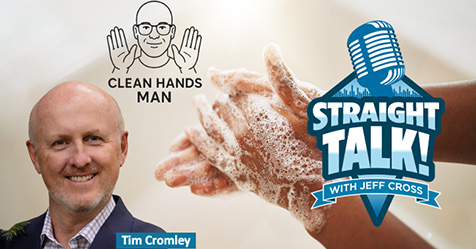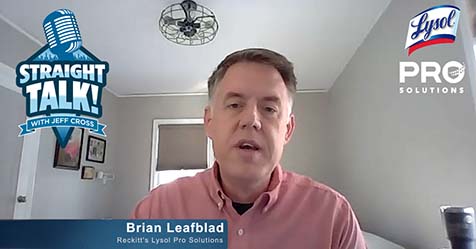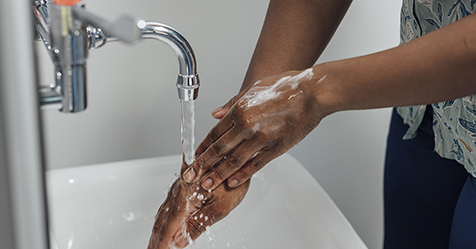Norovirus is on the rise across the United States, with the latest report from the U.S. Centers for Disease Control and Prevention (CDC) showing 91 outbreaks as of December 5, 2024. Norovirus can hit all types of businesses and facilities hard, and while most people recover quickly, severe cases can sometimes lead to hospitalizations.
Norovirus is very contagious and spreads very easily, according to the CDC. Quick action to clean and disinfect potentially contaminated surfaces or objects can be critical to help prevent its spread. But what products can businesses use to help protect customers and staff as quickly as possible?
How norovirus spreads
The CDC states that norovirus is transmitted when someone gets tiny particles of feces or vomit from an infected person in their mouth. A person with norovirus can shed billions of particles, which can spread throughout the area where they have vomited. Norovirus can also be spread through dirty hands onto shared surfaces such as restroom faucets, flush handles, restaurant tables, and door handles.
The virus has specific characteristics that enable it to be transmitted very easily between humans. It can quickly spread by direct contact, such as by consuming contaminated food or beverages, and it can remain on objects and surfaces, infecting people for days or weeks.
Some people may be infected with norovirus without having any symptoms, meaning everyone’s hand hygiene is critical after using the toilet. Equally, any of us could pick up invisible viruses left by others on surfaces, putting ourselves at risk when we eat finger foods or touch our mouths with contaminated hands.
To counter the spread of the virus, even where there have been no obvious signs of a norovirus incident, facilities should take protective action to target high-touch surfaces within high-traffic areas with EPA-approved disinfectants. Building managers and cleaning crews should use these products along with other appropriate cleaning and disinfection measures, such as encouraging people to wash their hands after using the toilet or cleaning up after someone who has been sick, and before handling food.
Any incident of vomiting should be treated as a possible norovirus incident. Businesses would be well-advised to have a plan in place to contain the area and clean it as quickly as possible before the virus is moved further along in the building.
Why fast action is key
How can businesses ensure they are making the right choice when choosing their disinfectant? When it comes to norovirus, kill time should be a deciding factor.
People who are infected with norovirus sometimes do not know they have it until they get sick. In the meantime, they can touch food or surfaces, thereby contaminating these surfaces. The virus stays alive on the surface, then when other people touch the same spot, the virus spreads. But if businesses target the right surfaces at the right time and with the right frequency—using a disinfectant with a short kill time—the risk of germ spread can be reduced significantly.
Businesses can consider one-step spray disinfectants that do not require wiping. Cleaning crews should consult product labels to determine which products are effective on hard surfaces, and which are safe to use on soft surfaces and furnishings, such as chairs.
While some environments—such as cruise ships—can present a unique, year-round risk for norovirus, most outbreaks of the virus in the U.S. happen from November to April, according to the CDC. Now is the time to reassess your hygiene strategy and ensure you have the right products and protocols to help protect your staff and customers.




